Mangrove Education and Restoration Blog
We are reaching the end of our time here in Jamaica and Art Binkowski, our J.A.M.I.N. videographer, got a lot of really great footage of the J.A.M.I.N. program, interviews, and aerial drone footage. Today, Art will be using the drone to capture the grade 11 Biology students at William Knibb High School monitoring mangroves in Falmouth.
When I informed the students that Art was going to be flying an aerial drone as part of the filming efforts the students shrieked in excitement. Just a couple of days ago, I didn’t have much experience with drones either. I was just excited, but for another reason. I couldn’t wait for the students to see what the Falmouth mangroves looked like from above. I thought that it would give them an entirely new perspective about the importance of their mangroves.
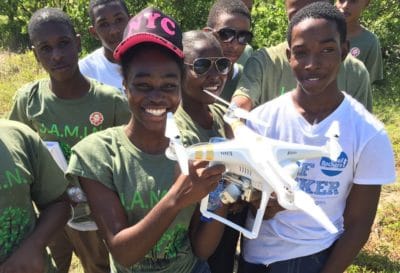
Students excited to launch the aerial drone.
After we finished setting up the mangrove quadrats, the students crowded around Art as he set up the drone. Though squelching hot, the students were still really excited to watch the drone fly. In preparation for launching the drone, Art placed it on level ground. The students started counting down and as they shouted 3…2…1, Art used the joystick to lift the drone off of the ground. The students looked on as the drone lifted higher and higher into the air.
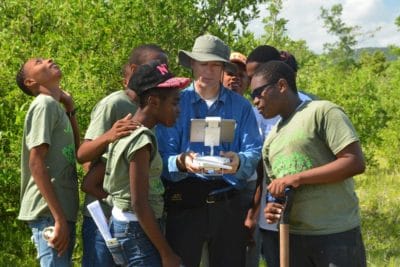
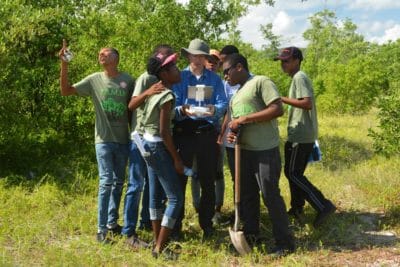
Students from William Knibb High School gather around Art Binkowski to get an aerial view the mangroves in Falmouth.
Then, Art showed the students what the view from the drone. The students were mesmerized by the iPad screen that revealed an aerial view of this expansive mangroves ecosystem. I heard one student say, “I had no idea that this mangrove forest was so large.” I heard others say, “Wow, that is really beautiful.”
Aerial footage of mangrove forests.
A couple of days ago, when I first saw the mangrove forest from the drone, I had the exact same reaction. When you are standing in the Falmouth mangroves, it seems quite small. You can only walk a short distance around the forest before the mangrove trees become so thick that you can’t pass through their intertwined root system. Of course I always knew that this mangrove forest was much larger than it appeared, but I didn’t realize just how expansive it was or how great the distance from where we stood at the restoration site to where the mangroves met the ocean. The mangroves truly covered a much greater area than I expected.
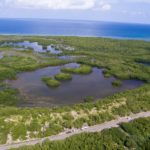
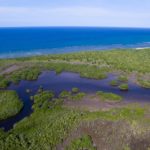

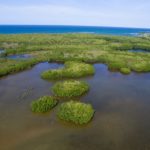
Mangrove forests, seen from the aerial drone.
(Click to enlarge.)
When we returned to the classroom, I projected the drone footage of the Falmouth mangrove forest on the wall. Again, the students stared at the footage in awe. When I asked them, do you still think that the mangroves are worth protecting? Without hesitating, the students loudly responded in unison, “yes, miss!” My heart warmed and I knew that the footage that Art shot, had not only imprinted a lasting impression on the students, but that it would be a valuable conservation tool for the future.